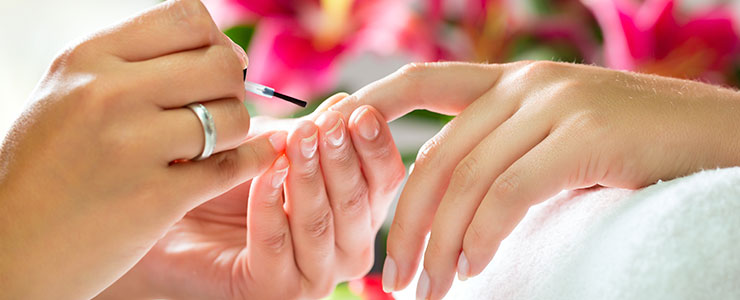
All You Need to Know About Hangnails/Hangnail Management
It doesn’t matter if you are an A-list actress receiving regular manicures or a blue collar construction worker who only thinks about nail care when they’ve grown too long, hangnails happen to everyone! But don’t fret, hangnails are treatable and many can be prevented.
What exactly is a hangnail?
The name “hangnail” would lead you to believe that suffering from a hangnail would involve some type of damage (ingrown, torn) to the fingernail. However, hangnails do not involve the actual nail itself. A hangnail is a strip of skin that separates from the cuticle surrounding your nail. Sounds painful right? It can be, depending on the severity of the hangnail and how it is treated. If a hangnail is treated incorrectly, an open wound can be left on the finger, possibly leading to infection and more serious issues.
What causes hangnails?
There are a few factors that can lead to a hangnail. Let’s take a look at them:
- Lack of Moisture: Hangnails are more common in winter months because the cold weather causes skin to dehydrate quickly. The dryer your hands get the more likely you are to suffer from a hangnail. And it’s not just the weather; any activity that dries out your skin will increase the likelihood of a hangnail.
- Biting: Many people (myself included) just can’t resist biting our nails. Unfortunately, this can not only damage nails, but teeth as well. And if that weren’t bad enough, nail biting can damage your nail bed (the skin underneath your nail). Damaging the nailbed leads to an increased chance of hangnails.
- Poor Clipping/Cuticle Care: A mishap with a clipper that results in a damaged nail can also lead to a hangnail. Additionally, clipping along the sides of the nails to shape them increases the risk as well. And if you frequently push back or cut your cuticles, you can expect a hangnail or two.
How are hangnails treated?
As tempting as it may be, do not simply tear off your hangnail! This can further and more seriously tear the skin on your finger and leave you with an open wound that is vulnerable to infection. The bottom line is that you are going to want to cut the loose skin off.
Don’t do it yet! Cutting it off dry can cause ripping. Start off by soaking your hand in warm water or oil for 10-15 minutes. This will soften the hangnail and make it easier to remove. After soaking the hangnail, dip your nail clippers or scissors in alcohol to avoid infection when making the cut. Use the clippers to cut the hangnail at the base. Remember to not pull while cutting as this can cause the skin to rip off. After cutting off the hangnail, rub some antibiotic on your finger and throw on a band aid.
How can hangnails be prevented?
#1: Getting into a moisturizing routine will not only help prevent hangnails, but it will improve your overall nail health. Something as simple as applying moisturizer to your hands two or three times a day goes a long way in winning the hangnail battle.
#2: STOP BITING YOUR NAILS! This is admittedly much easier said than done; but it can be done!
#3: Call Threads. Having a professional treat you with regular manicures will ensure that your nails are cut properly and your cuticles are taken care of in a healthy manner. If you choose to take care of your nails at home, be sure to cut straight across the nail and use a nail filer to round the edges.
Remember to moisturize thoroughly this winter and contact Threads if you have any questions regarding hangnails or nail care in general.



Comment
You must be logged in to post a comment.